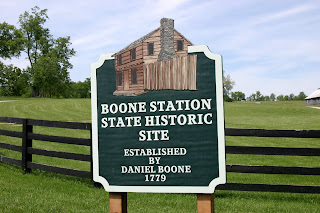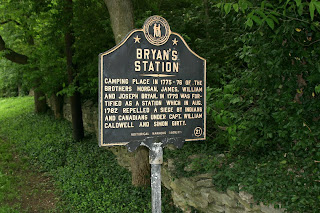
I recently celebrated my retirement by mapping out Davy Crockett's footsteps and spending a few days exploring the early years of his life, just down the road in Northeastern Tennessee. Selecting a home base was easy, The Davy Crockett Birthplace State Park a few miles below Limestone, TN.
(Footsteps MAP)
My first stop, before reaching the Park, was Historic Jonesborough, the oldest town in Tennessee. A leisurely walk through the well-preserved downtown is worth the
 stop. Jonesborough was founded in 1779, seven years before Davy was born, and seventeen years before Tennessee became a state.
stop. Jonesborough was founded in 1779, seven years before Davy was born, and seventeen years before Tennessee became a state.My stay at The Birthplace State Park was very nice. My site was directly above the Beautiful Nolichucky River where the falls turn the river West. (Video)
 Just upstream of the falls is the Limestone Creek branch, and the reconstructed cabin on the site where Davy was born, August 17, 1786.
Just upstream of the falls is the Limestone Creek branch, and the reconstructed cabin on the site where Davy was born, August 17, 1786. 


During the first 10 years of Davy's life, his family moved to a number of locations short distances from the Birthplace Cabin. Most significant of these was the Crockett Tavern 30 miles distant in Morristown. Here Davy helped with the chores and for the first time, was hired out by his father to help pay debts. These jobs led him to Winchester, VA, Baltimore, MD, and various places along the way. Davy was hired out for the last time when he started work at John Canaday's Panther Springs settlement, just west of Morristown.
A half-day trip to Crockett Tavern and Museum was well worth the time. In addition to the many artifacts on display, the Museum Interpreter provided an excellent program. I highly recommend a visit to Crockett Tavern to anyone interested in American History, especially Davy Crockett.
I also took a little side trip up to Rogersville, a small town made famous when Davy's grandparents were killed in a 1777 Indian Massacre at Crockett Spring.
The following slideshow contains highlights of my trip to North-eastern Tennessee in search of Davy Crockett Footsteps:













